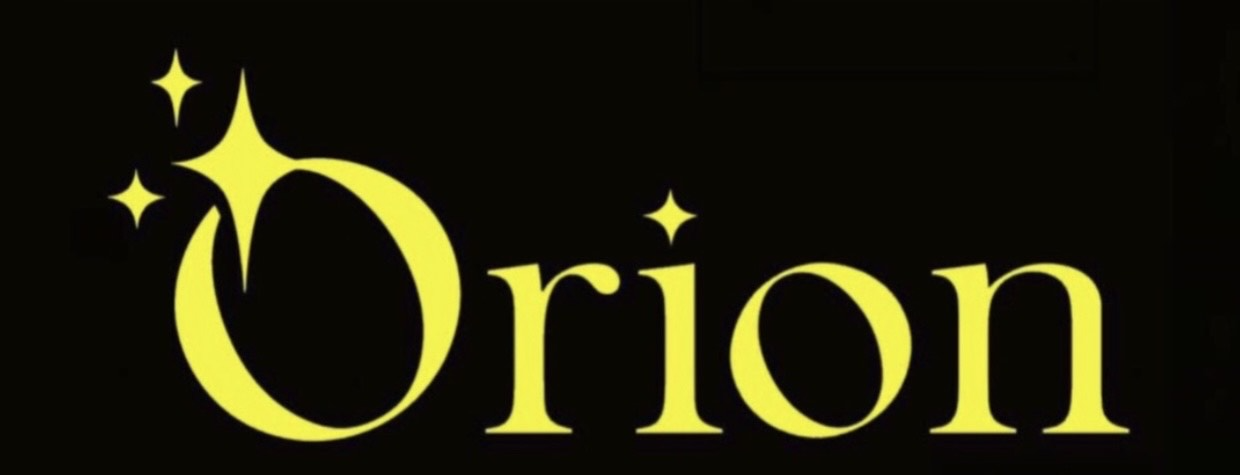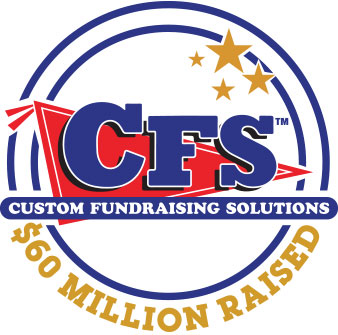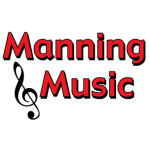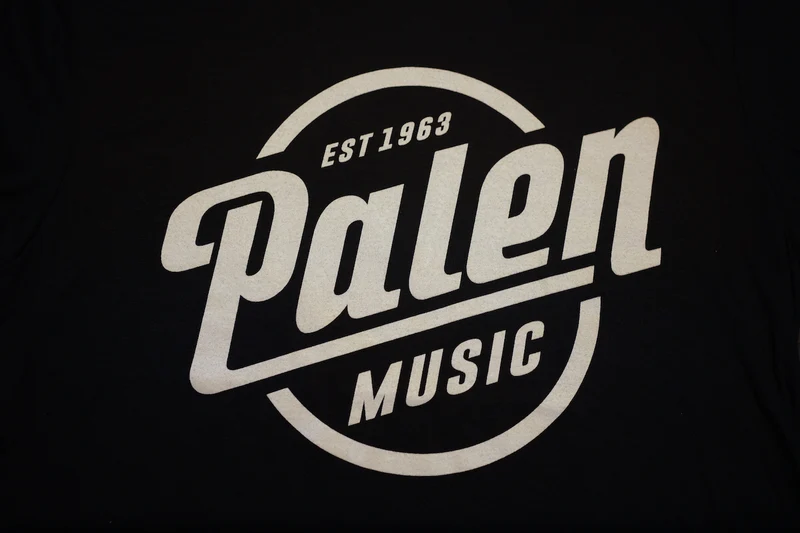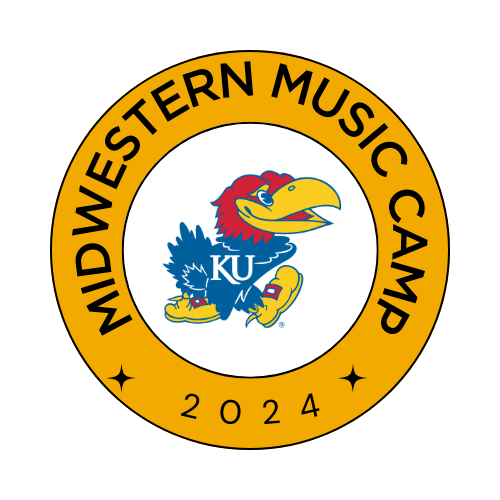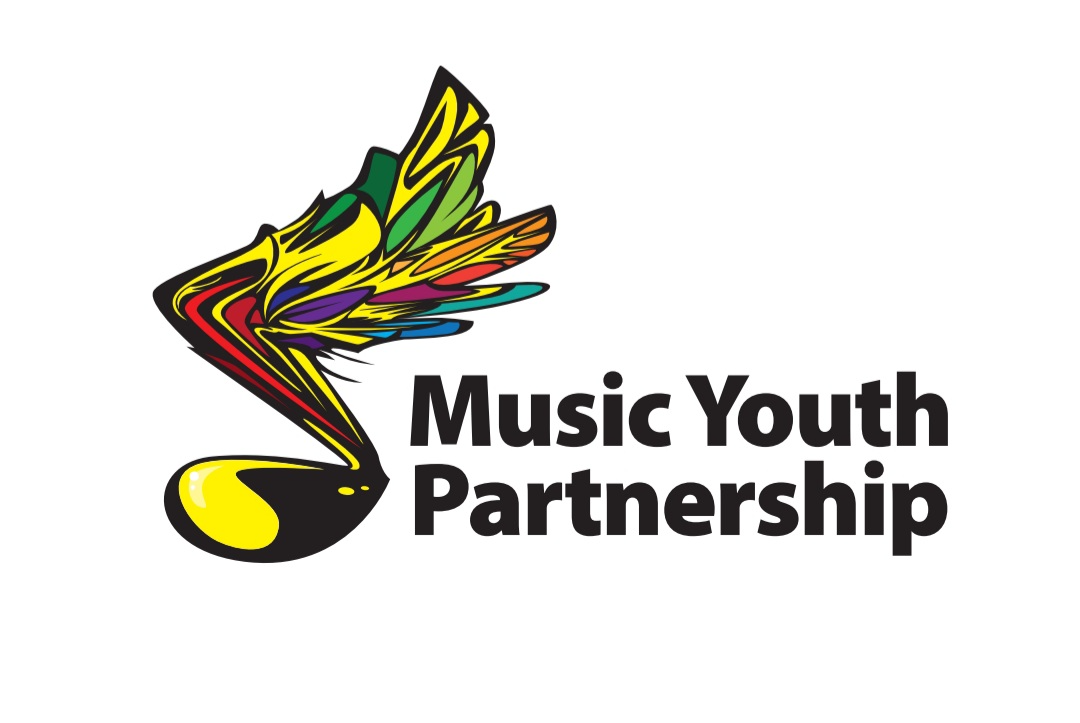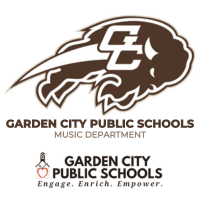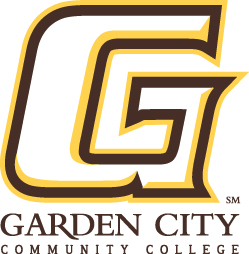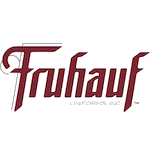
This two-article series is reprinted with permission from Rhode Island Music Education Review (RIMER).
U.S. Copyright is a complex and complicated set of laws that has direct implications on music educators since most of the printed music and music books used in our schools are copy protected. It my hope that a better understanding and awareness of U.S. Copyright will lead to a greater consciousness and compliance to its laws.
Imagine for a moment that copyright laws don’t exist. You write, let’s say, a novel. Even though you spend many hours, days, weeks, and even months creating your novel, unless you keep it under lock and key, anyone who could get his or her hands on a copy could enjoy your work totally free of charge. You would not be compensated for your work. If someone chose, he or she could modify your work and call it their own work. In perhaps a rare but possible case, Hollywood could come along and turn your novel into a movie. Don’t count on any income, or even a request for permission for its use. No copyright law, no compensation for all your hard work. Fair?…of course not!
The U.S. Copyright law was based on a simple principle, if you create something, it is yours to control and benefit from its use. “Copyright” literally means the right to copy. With copyright, a writer is guaranteed protection against unlimited free use of his or her work by others. There is incentive for an artist to create because there is potential for income to be realized. As the United States Constitution states, copyright laws are designed “to promote the progress of science and the useful arts, by securing for limited times to authors…the exclusive right to their respective writings.” Those countries having strong copyright laws benefit by having art that provides enrichment to their people.
With the copyright law, composers have certain exclusive rights to any work that they create. As with any artistic work, it represents a form of property of which the artist can freely transfer the copyright. In other words, an artist can sell, license, or assign his or her copyrighted work. For any composer to turn an original creation into income, it is usually desirable and necessary for the works to be published. This provides a means of dissemination of the creative work to the public. Within a standard publishing contract between a composer and the publisher is found the main clause explaining the responsibility of the publisher; primarily to exploit the work of the composer. Therefore, the copyright of the work is assigned to a publisher. As music educators, we usually see printed sheet music which is the principle way the publisher “exploits” the work of the composer. There are many other ways in which music is exploited by publishers, but for right now, we’ll save some of the other ones that affect the music education community for a later time.
The composer’s work is done; he or she was responsible for creating the work. What responsibilities does the publisher have? The publisher is really the composer’s business agent responsible for printing the work, distributing the work to music dealers, monitoring and collecting money for the publication, and paying the composer a share of the proceeds as specified in the publishing contract. The printing of the music alone is a monumental and multifaceted task. The music is first engraved, and then sent to the composer for a thorough proofing. Once the proofs are returned to the publisher, all corrections are made and plates are cut for printing. After all pages have rolled off the press, the music is collated, assembled, and prepared for shipping. The overall process can take anywhere from a week to nearly a year depending on the length, scope and medium of the composition.
But, an amazing thing can happen. With a photocopy machine, one can take a printed piece of music (illegally of course) and in a matter of minutes, reproduce a copy of the work. As a composer, it blows my mind when I finish a major work, which might have taken me months to create and orchestrate, only to have a reproduction of the score produced on a copy machine in a time span of about five minutes. (Only this time, the reproduction is legal since I created the work). Technology has allowed us to do amazing things that were not possible when the original copyright laws of this country were created. Now that copy machines are widely available and common in every school, it is so common to “run a few more copies of a piece of music” or “save Johnny the expense of purchasing a solo for the solo and ensemble contest by just making him a copy” or, when the budget is really tight, “just copy everything we need so we can get through the school year. There is just no money for music right now. Maybe next year’s budget will be better.” There is a big problem here! This is stealing!
Printed music is a physical embodiment of a composer’s creation. It is black ink on white paper. Once a composer’s work is available to the public, it is all too easy to copy, distribute, perform and even create derivative works of the piece. Copyright laws exist to deter these actions. Penalties for infringement range from $500 to $20,000 for statutory damages and up to $100,000 per copyright infringement if the court finds willfulness of the act. Every illegally copied piece of music means a lost sale and lost income to everyone involved in putting the piece of music in print.
There are also moral issues involved with copyright infringements. Allow me to close this article with a scenario that most of us can relate to – All-State Auditions. Think about this: It would be highly inappropriate for your students to walk into a music store and help themselves to instrument supplies such as reeds, valve oil, cork grease, etc. for their audition without paying. It would be unacceptable for your students auditioning for All-State not to pay the required auditioning fee. It would be deplorable for any of your students taking private lessons in preparation for All-State auditions to cheat his or her teacher out of private lesson fees. More so, it is a flat-out copyright infringement when your students use a photocopy of the audition piece whether it is to prepare or audition for All-State. Allowing a student to learn any piece from a photocopy but then providing him or her with the original music for the audition or adjudication is still in violation of copyright. Further, the student will not have the benefit of any markings that have been added to the photocopy if this cannot be used in the audition therefore putting him or her at a disadvantage.
Copyright and How It Affects You Part 2: Fair Use
What is “Fair Use” All About?
The current U.S. Copyright Law contains certain provisions, or exceptions, from the normal restrictions on copyrighted materials. These exceptions are for purposes such as criticism, comment, news reporting, teaching, scholarship, or research. Obviously the word “teaching” is among the list, but don’t get excited; this does not mean that photocopies of music are permissible since we are “teaching” music in an educational setting.
The Fair Use provisions use four factors to determine the “fairness” of reproducing copyrighted material without infringing on the owner’s rights:
- Purpose and character of the use
- Nature of the work
- Amount and substantiality of the portion used
- Effect on the potential market for or value of the work
These four factors essentially determine the limitations on copyrighted materials. The U.S. Copyright Law contains an extensive list of these Fair Use provisions, but only a handful apply to music: photocopying, recording, and preparing derivative works (editing or simplify a work). In this article, we’ll look at Fair Use with respect to photocopying music.
What can be photocopied?
Well, not to spoil your day, but there are only two Fair Use provisions for photocopying music. One has to do with lost or misplaced music for an imminent performance, and the other has to do with academic music study other than a performance. Let’s examine both more closely, but just for your information, here are the two provisions as they appear in the copyright law:
- Emergency copying to replace purchased copies which for any reason are not available for an imminent performance, provided purchase replacement copies shall be substituted in due course.
- For academic purposes other than performances, single or multiple copies of excerpts of works may be made, provided that the excerpts do not comprise a part of the whole which would constitute a performable unit such as a section, movement, or aria, but in no case more than 10 percent of the whole work. The number of copies shall not exceed one copy per pupil.
Emergency Copying
If one of your ensemble members loses a part, that’s a problem: it is illegal to produce a replacement on a copy machine. If it occurs just before a performance, it’s still a problem, but to be “fair” to the performers, a photocopy may be made; however, replacement copies must be purchased in due time. If that seems like a lot to have to go through because a student lost their music, think about this: if a student loses her science book, I don’t think the teacher just produces a replacement on a copy machine. The science book was assigned to the student and it is the student’s responsibility not to lose it. If they do, there commonly are consequences. Sheet music is essentially the textbook for our musical organizations. I know of many school ensembles where students are charged a fee if all music is not turned in at the end of the school year. Harsh? Not really; these schools have taught the student respect for property and for copyright compliance.
Two ideas in the “Emergency Copying” language above are somewhat vague and open to interpretation, and they merit some comment: “imminent” and “due course.” Instead of trying to define an exact time frame, please consider an “imminent” performance simply as the final rehearsals and the performance(s). If a student loses his music two months before a performance, there really is time to purchase the individual parts. The other phrase, “due course,” doesn’t mean when I finally get around to it, nor does it mean drop everything and order the part. It does mean that you will purchase the replacement copies and destroy the photocopied music in a timely fashion. Recently, many publishers have resorted to e-print copies, meaning that you can contact them and have them electronically send you the requested part via email. The attachment is generally a pdf file with an “Authorized Copy” stamped on the music. This recent development now has new implications on “imminent” and “due course” and has made it much easier to obtain “legal” copies of music with very little turn around time.
As I said initially, when a student loses their music, that’s a problem, and when it happens, unfortunately you now have more work to undertake. Although the copy machine is a very nice convenience, students losing music is very inconvenient. I am very aware of how busy teachers are, and the last thing you want to deal with is purchasing music because of irresponsible students. If a student is made aware of how inconvenient their lost music is, perhaps she will learn to become more responsible.
A true story I like to tell has a college jazz ensemble director who one day had a student show up at his office, exclaiming that he lost his music for the upcoming jazz concert. The director informed him that he had better plan on a very long night, because he would need to hand-copy all his parts from the scores, whereupon he was handed the pile of scores. (This was before the days of music notation software.) The next day, with eyes barely open, the student walked into the director’s office to hand back the scores. After taking the scores back from the student, the director opened his desk drawer, took out the student’s folder and sternly said, “Don’t ever leave your folder in the rehearsal room again without putting it away!” I would venture to guess that he quickly developed a new sense of responsibility towards property such as music.
Academic Purposes Other Than Performance
When I teach music theory and composition, this Fair Use provision allows me to photocopy a small portion of a work for study. The language is clear on how much I am able to copy (no more than 10% of the whole work) and how it is to be distributed. I commonly will copy a portion of a copyrighted work such as two pages (10-12 measures) of a score so the class can study orchestration and scoring. Students can keep the copies – they do not need to be destroyed – but I do need to include the copyright notice on the copies. What needs to be stressed is the phrase, “other than performance.” The music was photocopied for study purposes, and we did not “perform” the work; this Fair Use provision is limited to music classrooms, not rehearsal rooms.
Prohibited in Regard to Fair Use
The default comment that is commonly used when photocopying music is, “That’s OK, it’s allowable by Fair Use.” In most cases the intention is not to infringe on copyright, but this shows a poor understanding of the Fair Use provisions and how they apply to what we do in a teaching environment. To help clarify what can be photocopied, here are five situations that are expressly prohibited in regard to Fair Use:
- Copying as a substitute for the purchase of music, except as in the two Fair Uses described earlier.
- Copying for performance, except for emergency replacement of purchased copies described earlier.
- Copying without the inclusion of the copyright notice that appears on the printed page.
- Copying that is intended to be “consumable” in the course of teaching, such as workbooks, exercises, standardized tests, answer sheets, and similar materials.
- Copying to create, replace, or substitute for anthologies, compilations, or collective works.
The first two items prohibit photocopying to avoid purchase. It’s obvious that the copyright holder, as well as the composer, publisher, distributor, etc., lose significant income when people photocopy to avoid purchase. I hate to say it, but it is stealing.
Interestingly, the fourth item listed has caught a few music teachers by surprise. When a teacher creates a course packet that includes copyrighted materials, even though it is intended for classroom study, it is in violation of copyright if permission has not been obtained. Think about it – the teacher chose to include certain specific copyrighted musical examples, which is an obvious indication of the music’s (unreimbursed) value. The course packets are then “produced” by the school and either given (or at many universities, sold) to the students. Referring to the four factors for Fair Use described in the beginning of this article, it may be clear that this situation is infringing on the “owner’s rights” if permission was not obtained.
Lastly, the final item has impact particularly on private lesson instructors when photocopies are made from anthologies, compilations, or collective works. A teacher makes a photocopy of a solo work or etude for their student to work on from a book of solos or etudes. By working on the solo or etude, the student is essentially “consuming” the musical product. It is, unfortunately, avoiding purchase. “I can’t expect my student to pay $39.99 for a book of solos when I only want them to use one of them.” I’ve heard this a number of times, but not surprisingly, the instructor doesn’t hesitate to accept their $40.00+ fee for an hour lesson.
To debunk the myth regarding “out-of-print” music, you may not photocopy a work simply because it is out of print. Copyright extends for at least 50 to 75 years regardless of the publication status of the music. It is important to remember that someone still owns the right to the work (unless it is in public domain), even if sales have been poor. I recently had to deal with an out-of-print situation with a church choir. We were joining choirs for a performance, and the piece we were to perform was out of print. I contacted the publisher who directed me to their online form. It was easy to complete, and I received permission to photocopy within two weeks. They sent me an authorization letter with specifications about the copies and didn’t charge a fee, which can sometimes happen. I would estimate that it took me less than ten minutes to do what I needed to secure permission for photocopying the piece.
What Should I Be Doing?
Taken as a whole, Copyright Law is complex and confusing, but as educators we need to stop pleading ignorance and begin to develop an understanding of compliance. These copyright articles are by no means intended to say “shame on you” or embarrass anyone, as many of us have been guilty of photocopying without permission simply because copy machines are so convenient. The bigger question is this: are you willing to carry the liability of copyright infringement? You and your school could be liable anywhere from $500 to $20,000 in statutory damages and, if the court finds willfulness, up to $100,000 per copyright infringement. I don’t know about you, but that knowledge sure keeps my fingers from pushing the copy button.
- Contact the publisher about your concerns. Too few flute parts? No money left to purchase judge’s scores for festivals? Make the call or contact them by email. In many cases, they do make concessions.
- Many publishers are now using online forms for asking permission to make photocopies. Just remember that each publisher has a different set of “standard operating procedures.” What one publisher does is not necessarily the same as what another publisher does.
- If you are using photocopied music for school, are you willing to approach the administration to ask for some additional funds to avoid putting you and the school in liability of copyright infringement?
- Students losing music is a common reason why some photocopies are made. Have you established a policy that deals with lost or misplaced music? Are your students “assigned” their music folder just as they are assigned a textbook?
- Don’t steer clear of copyright articles in music journals, and be sure to attend clinics and workshops designed to help the music educator grasp and understand copyright policies better.
- NAfME has several good resources and information about copyright on their website.
The next time you get ready to push the button on a copy machine, ask yourself if you would be willing to teach a portion of the day without getting paid, or if you feel comfortable going into a retail store and taking an item without paying for it.
Roger Cichy is a freelance composer and arranger with over 300 compositions and arrangements to his name, writing for high school, university and professional bands, professional orchestras, and the commercial music industry. He holds Bachelor of Music and Master of Arts in Music Education degrees from The Ohio State University. He has directed concert bands and marching bands at the elementary, high school and college levels, serving at both the University of Rhode Island and Iowa State University. Roger lives in Scituate with his wife, Patricia.

